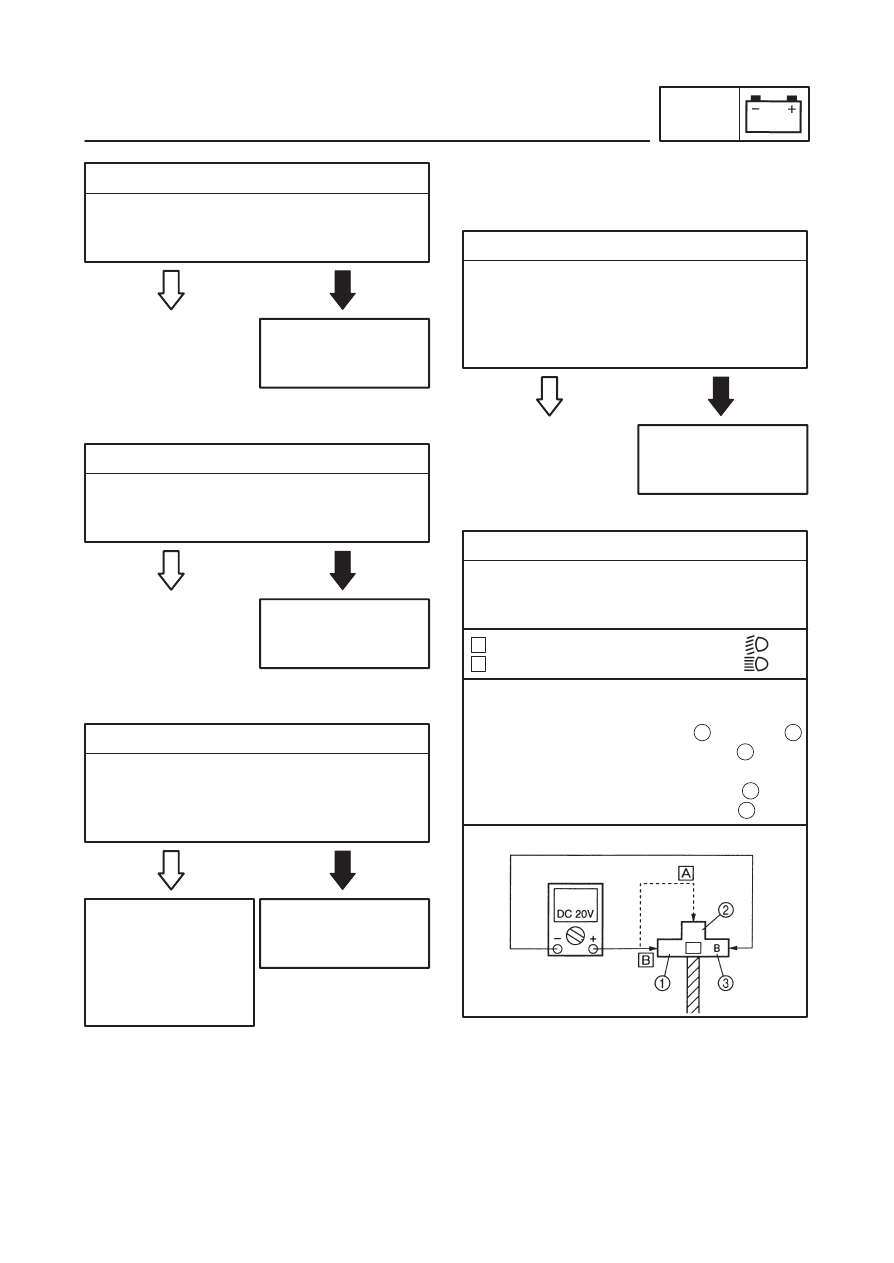Yamaha XVS1100 (L). Service Manual - part 21

7-28
Y
G
Check the dimmer switch for continuity.
Refer to “CHECKING THE SWITCHES”.
Is the dimmer switch OK?
YES
The dimmer switch is
faulty. Replace the
left handlebar switch.
NO
5. Dimmer switch
EAS00786
Check the pass switch for continuity.
Refer to “CHECKING THE SWITCHES”.
Is the pass switch OK?
YES
The pass switch is
faulty. Replace the
left hadlebar switch.
NO
6. Pass switch
EAS00787
Check the entire lighting system’s wiring.
Refer to “CIRCUIT DIAGRAM”.
Is the lighting system’s wiring properly con-
nected and without defects?
YES
Properly connect or
repair the lighting sys-
tem’s wiring.
NO
7. Wiring
Check the condition
of each of the lighting
system’s circuits.
Refer to “CHECKING
THE LIGHTING SYS-
TEM”.
Check the headlight bulb and socket for con-
tinuity.
Refer to “CHECKING THE BULBS AND
BULB SOCKETS”.
Are the headlight bulb and socket OK?
YES
Replace the head-
light bulb, socket or
both.
NO
1. Headlight bulb and socket
2. Voltage
Connect the pocket tester (DC 20 V) to the
headlight and high beam indicator light cou-
plers as shown.
When the dimmer switch is set to “
”
When the dimmer switch is set to “
”
A
B
Headlight coupler (wire harness side)
EAS00788
CHECKING THE LIGHTING SYSTEM
1. The headlight and the high beam indicator
light fail to came on.
Headlight
Tester positive probe
yellow
or green
Tester negative probe
black
High beam indicator light
Tester positive probe
yellow
Tester negative probe
brack
1
2
3
4
5
LIGHTING SYSTEM
ELEC
EAS00784